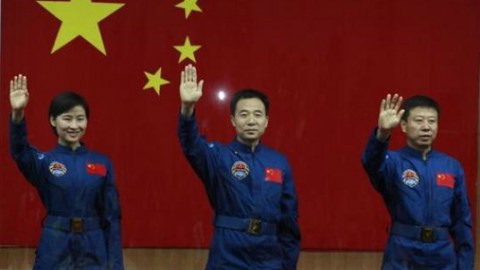China: From Copycat Nation to Space Innovation

The United States is an innovation economy while China is a copycat economy. That is how the conventional wisdom goes, and a common objection to China’s way of doing business was neatly summarized by Alexandra Harney recently in The New York Times. “Too often China’s purpose is not to build on what the competition has done,” Harney writes, “but simply to steal its work and underprice it.”
In other words, dishonesty wins in China, and it might very well be the country’s undoing. The fear of intellectual property theft erodes trust and cooperation. And that seems to be one big reason China is stagnant when it comes to innovation.
However, if we look at aerospace technology, we see a different story. According to a recent paper by Michael Raska of the Institute of Defense and Strategic Studies at Nanyang Technological University, “since the late 1990s, China’s government has gradually introduced elements of competition and globalisation, with the aim of overcoming the entrenched monopoly of China’s traditional defense-industrial conglomerates.”
Raska says these reforms have allowed China to streamline research and development, and transfer technology between its civil and commercial space entities. This has all happened under a veil of secrecy, but there are still very clear signs that China is fast developing into an innovator in aerospace technology. For instance, Raska observes:
The trajectory of China’s ballistic missile R&D and production shows a gradual transition from copying and reproducing first-generation Soviet ballistic-missile technologies to adapting and modifying smaller, mobile, solid-propellant ballistic missiles and their follow-on second-generation systems. China is now an independent producer and technological innovator of selected missile systems and related aerospace technologies.
What’s the Big Idea?
The United States has certainly copied industrial practices from Europe, while inventing its own — notably the moving assembly line. The U.S. has been using that manufacturing model now for 100 years, and many would argue it is time to catch up with the times, and, dare we suggest, look at practices from other countries in order to reverse-engineer a flourishing U.S. economy.
In other words, being a copycat and an innovator often go hand-in-hand, and a good example of this is China’s space program, which has recently achieved some significant milestones.
China recently completed its first manned docking mission in space, with its first female astronaut being a vital part of the 3-member crew. This was a significant step forward in China’s plan to build a large manned space station by the year 2020.
So how did they get there? Here are some of the important milestones in the history of China’s aerospace program:
What’s the Significance?
During the honeymoon period of the Sino-Soviet alliance, China was provided with technology and training to develop rockets. In other words, they were allowed to copy from their Soviet Cold War friends. However, when the paternal relationship between the two powers broke off, China developed a strategic goal that is now growing closer to fruition today. That goal, according to Michael Raska, is to “close the gap with technologically more advanced adversaries and near competitors – principally the United States, Russia, and Japan.”
The recent achievements of China’s space program are understandably a source of enormous national pride. So where does it go from here?
Will the U.S. and China fight a war in space or will the two countries perhaps collaborate on a joint mission to Mars? The answer to that question depends on who the copycat will be, and who will be the true innovator, and just how comfortable each country will be in its respective role.
Image courtesy of Shutterstock
Follow Daniel Honan on Twitter @Daniel Honan





